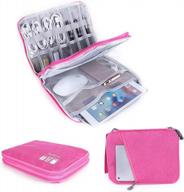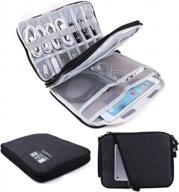
Review on 📡 OptimizeTV Outdoor Antenna - Digital Amplified HDTV Antenna with Motorized 360° Rotation, Wireless Remote, 1080p/4K Ready, up to 150 Miles Range, 40ft Coax Cable, and Mini Indoor TV Antenna by Darth Naubert

My Frankenstein is the best TV antenna
My Frankenstein******** My settings are marked below for quick reference ******** I live in Palm Bay , Florida (southeast of Orlando) and wanted to give up cable, phone line and internet. I have pretty high expectations for what I want from my OTA antenna. I want ABC, CBS, NBC and FOX. I want my NFL games and these networks' good primetime shows. But I don't live in or near town and would like to run four TVs with my Ota setup. So I chose this antenna based on the reviews and the range. I placed it in the attic and turned it to face the Orlando Towers to the northwest. I got about 40-46 channels depending on how I played around with this directional antenna. I'm 50-60 miles from the main channels I wanted to receive; ABC, CBS, NBC and FOX. When I first set up this antenna, of those four, I picked up ABC, CBS, and NBC first. FOX was nowhere to be found. ABC and CBS were great, but NBC had a bad signal. I moved this antenna, I lost NBC, and I moved this directional antenna for days, and I never got a signal from FOX, and the NBC signal never came back. I still have a lot of channels with this antenna. So I decided to do some more research (note this is a UHF [very high frequency] and VHF [very high frequency] directional antenna) in hopes that I could improve the number of channels and signal strength. After weeks of reading tech blogs, antenna setup websites, antenna setup blogs, knowledgeable people websites, reading and learning how to understand TVFOOL website and various other free websites that plug in your location and signal values received, I understand the general theme . Every situation is unique, and everyone builds their own Frankenstein monster and compares their experiences. Also keep receipts so you can return things that don't work. Device Information After doing this research I understood the difference between unidirectional, multidirectional and omnidirectional antennas, indoor and outdoor antennas, when and how to properly ground, changes in local codes over the years on grounding, what a preamp is and what they are good for in certain situations and when to use a distribution amplifier in combination with a preamp. If you plan to combine two antennas never use a splitter, get a coupler/combiner, buy new quad shielded solid copper coax to run around your house, don't use too much extra coax between ports and ports/devices. Buy a tool kit so you can cut your own coax to the right length and get F connectors to properly terminate your ends after cutting. Diagram of your location and the towers around you, I didn't get (or never noticed) the specs as to which particular tower was a "UHF" tower or a "VHF" tower. But in the end I found a website that listed the frequency of each tower. Antennas Direct (they sell a variety of antennas and gear for them) has a position finder, or what they call a "transmitter locator". Plug in your address and it will show you your towers and signals like TVFool and the rest, but they will also give you the frequency of each tower. That's how I knew my NBC station tower was operating VHF. "UHF" and 2 "IN" ports on the right side labeled "VHF". This means that the port on the left only receives ultra-high frequencies, while the other port on the right shows that it only receives very high frequencies. high frequencies. They then combine the UHF antenna signals with the VHF antenna and their signals with the output port. I've read that very few today can take a UHF/VHF antenna from either side and splice their signals together. I couldn't find one that was clearly listed for this purpose, but I did find one that commented that it can use a UHF/VHF antenna on both "IN" side ports. grounding information. If you are grounding the coax externally, do not purchase a grounding block. , buy a surge protector instead. Stick the ground rod into the ground (outside you should be able to see your cable company's green-coated copper wire running from the cord box in the ground to the ground rod), the difference is that the LSP has better surge protection. If you are using an external antenna, the antenna ground must also be grounded. It must have a ground rod no more than 20 feet away. So if your antenna is on one side of the house and the ground stake is on the other, you will need to install a new ground stake to meet this requirement. Here where I am, it can be completely buried. A 6 AWG or larger copper wire must be connected to the grounding rod through the grounding rod terminal. Then you need to run 6 AWG copper wire (4 AWG is thicker and preferred) to the main house ground rod and clip the "glue" there. The industry uses the term "glue/glue" to refer to the clamping of a copper wire to a grounding rod. Also, my current code says the ground bars should be twice the size of the ground bar, 8ft apart for a 4ft bar, 16ft apart for an 8ft bar, etc. Conclusion After all of that, I have mine found Frankenstein I wanted to build. I decided to start my trial and error process with two antennas, a coupler/combiner, a preamplifier, a surge protector, and a distribution amplifier. I bought a second antenna, DB8e Bowtie. This antenna is from Antennas Direct, which I mentioned earlier ("Transmitter Locator" with the specifics of the "UHF" and "VHF" towers). I called and spoke to the lady there (US company and US customer service line, no foreign customer service representatives). As we talked, she saw my location and her transmitter locator. She asked if I go inside or outside, I told her in the attic; She naturally suggested the two most expensive antennas, a DB8E range/reach bowtie antenna for UHF, and combine it with a Clearstream 5 antenna for VHF. They have a 90 day return policy when purchased directly from them. But I bought the DB8e Bowtie "UHF" at my local Walmart store for two reasons: A) I can examine this expensive antenna in store upon pickup, B) Walmart has a decent return policy. I brought the DB8e home, installed it, connected it to this antenna and got 46 channels, and most importantly I got FOX. I now have FOX. I know some people in my area who can't get FOX no matter what they do. They no longer think about it and have given up receiving the FOX signal. But I got it. Since this DB8e "UHF" antenna gave me a channel that this current antenna could never achieve (FOX) and other people couldn't get that channel with their setup, I was impressed with this company and their gear. Impressed with the DB8e Bowtie, I ordered the Seller's suggested Antennas Direct "VHF" ClearStream 5 antenna (from AMAZON). I unplugged this antenna and added a Clearstream5 VHF antenna with a Db8e fly; I now have 54 channels including ABC, CBS, NBC, FOX, CW, ION channels, PBS channels, Movie channels and more. My channel signals are also stronger. Of course, Ota channels are fundamentally different from what you get over cable like FX, SyFy, History Channel and so on. I don't get these channels from ota. But if I save $150 a month, I can broadcast those channels one way or another. > Surge Protector > Coax Cable Back to Loft > Distribution Amplifiers/Splitters > Coax Cable to 4 TVs Current products are listed below*********** (Antenna 1) DB8e Bowtie + (Antenna 2) Clearstream5 > Winegard CC-7870 antenna coupler > Winegard LNA 200 preamplifier > TII 212 Lightning Surge Protector for Broadband Cable & Satellite TV 75 Ohm, 5-1500 MHz > Distribution Amplifier PCT 4 Port Cable TV/HDTV/Digital **** ***** *Note: PCT 4 -Connection The distribution amplifier I chose has 4 TV connections, so I don't need a splitter to support four TVs, just this dist. amplifier
- Don't waste too much time
- Long wait
New products
Comments (0)
Top products in 🎧 Audio & Video Accessories
Another interesting products

Universal Electronics Accessories Organizer Bag - Waterproof Portable Cable Travel Gear Carry Bag (L, Black/Pink)

27 Review

Soft Silicone AirPods 3 Case Cover With Fur Ball Keychain - Shockproof Protective Cover For 2021 Version Charging Case With Visible Front LED - Ideal For Women And Girls - Light Purple By OULUOQI

20 Review

Large Waterproof Cable Organizer Bag For Travel, Universal Electronics Accessory Holder, Portable Gear Carry Case For Cables - Black

28 Review

Protect Your Airpods In Style With Hamile Cute Cover - Black Cow Pattern For Girls, Women, And Boys - Compatible With Apple Airpod 2 & 1 - Portable Keychain Accessories Included

25 Review





